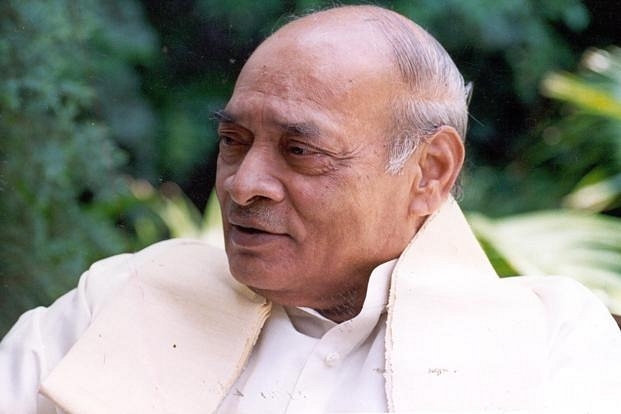Magazine
Sanjaya Baru’s “1991” Is Paisa-Vasool For Its Anecdotes
- Sanjaya Baru’s 1991: How P.V. Narasimha Rao Made History is a paisa vasool book for the anecdotes it offers around what was happening in the political and the economic circles of Delhi in 1991, when India was on the brink of an economic crisis.

Narasimha Rao
Sanjaya Baru. 1991: How P.V. Narasimha Rao Made History. Aleph Book Company. 2016.
In that sense, Sanjaya Baru’s 1991: How P.V. Narasimha Rao Made History is a paisa vasool book for the anecdotes it offers around what was happening in the political and the economic circles of Delhi in 1991, when India was on the brink of an economic crisis. Sample this. India is more or less running out of foreign exchange. The country needs to mortgage gold in order to raise foreign exchange so as to be able to continue paying for essential imports, including oil. Now, gold as we know is a touchy thing among us Indians. As Baru writes: “A family that mortgages gold to finance its daily needs is a family in despair.”
When Cabinet Secretary Naresh Chandra told Prime Minister Chandra Shekhar about having to mortgage gold in order to pay for imports, “his initial reaction was that of disbelief and anger”. “I do not want to go down in history as the man who sold gold for buying oil,” Chandra Shekhar reacted furiously. To which Chandra replied, rather coolly, “But, sir…you have to choose between going down in history as the prime minister who mortgaged gold or as the prime minister who defaulted.” It is this and many such anecdotes which make Baru’s book stand out.
Here is another interesting anecdote from the book. In the run-up to 1991, India had managed to accumulate a good amount of foreign debt. By then it was extremely common for developing countries (or what was known as the Third World at that point of time) to default on their debt. Mexico had done it previously. So why not India?
A highly placed economic policymaker recommended to Chandra Shekhar that India should default on its debt. Interestingly, Baru does not reveal the name of this policymaker. The economic policymakers at that point of time, among others, were Deepak Nayyar, who was the chief economic adviser, C. Rangarajan who was a deputy governor of the Reserve Bank of India, and Manmohan Singh who was the adviser to the prime minister.
“(It) was announced by the Minister of State for Industry P.J. Kurien on the morning of the finance minister’s budget speech on 24 July. Given the political and media focus on the budget speech, the real reform of the day did not get the play it deserved. This was clearly by design.”
Indian politicians and a host of left-leaning economists and intellectuals at that point of time were allergic to anything that allowed the private sector to do business more easily. Given that, Rao’s move to dismantle the entire licensing regime at one go and getting a junior minister to announce it, was a masterstroke.
Baru’s book falters while analysing the economic reasons behind what led to the crisis of 1991. Is that by design—given the fact that the book is quite slim? Not really. Baru goes into quite a lot of detail while analysing the changing world scenario at that point of time because of the collapse of the Soviet Union and how that impacted India.
Given this, he could have easily gone into discussing the economic part of the 1991 crisis in a little more detail and dedicated a few more pages to it. This becomes especially important, given that there is no book till date that has gone around doing it in simple English, which non-economists can understand. Vijay Joshi and I.M.D. Little’s India’s Economic Reforms (1991-2001) is a good technical tome on the subject.
Another weakness of the book is that Baru only attempts to project Rao in a positive light. There is almost no mention of how Rao went around ensuring that the Congress Party survived in government for two years and finally got a majority in the Lok Sabha only in 1993. A discussion on this very important issue would have only added to the depth of the book.
Over the years, Manmohan Singh got credit for what was basically Rao’s doing. Of course, this was primarily because the Congress Party does not like to project anyone other than the Nehru-Gandhis as having done something good for this nation.
The question is: Where did Rao fit into all this? What did he think of it? As Baru writes: “A few years before PV passed away, a former official of the Finance Ministry asked him how much credit he would like to take for the reforms of 1991-92 and how much credit would he give to Manmohan Singh.”
Like a good politician, Rao praised Singh and “acknowledged his loyalty and his contribution to reforms.” “Then, in his characteristic deadpan manner, he said… ‘A finance minister is like the numeral zero. Its power depends on the number you place in front of it. The success of the finance minister depends on the support of the prime minister.’” That one sentence says it all.
Introducing ElectionsHQ + 50 Ground Reports Project
The 2024 elections might seem easy to guess, but there are some important questions that shouldn't be missed.
Do freebies still sway voters? Do people prioritise infrastructure when voting? How will Punjab vote?
The answers to these questions provide great insights into where we, as a country, are headed in the years to come.
Swarajya is starting a project with an aim to do 50 solid ground stories and a smart commentary service on WhatsApp, a one-of-a-kind. We'd love your support during this election season.
Click below to contribute.
Latest